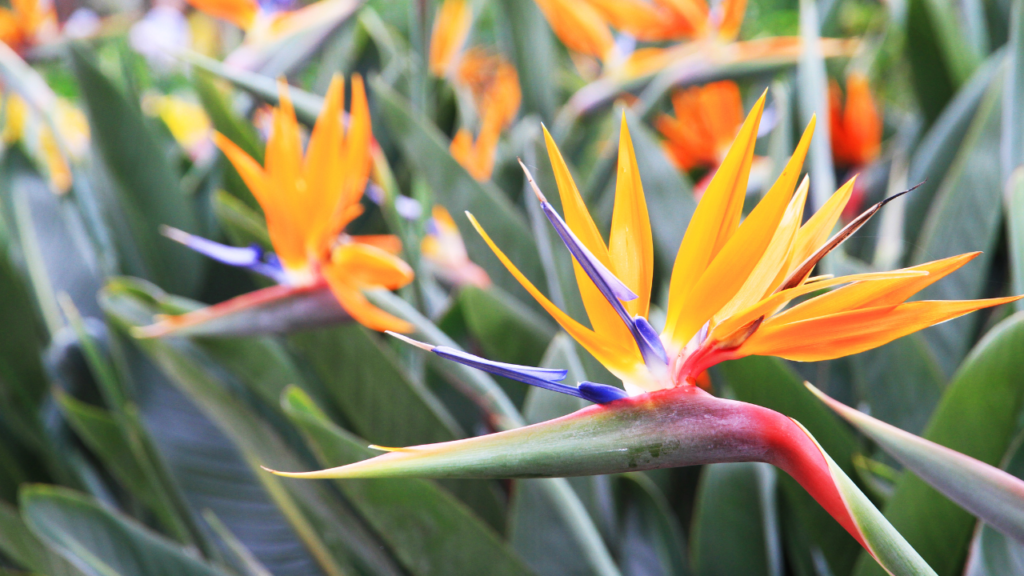Welcome to the enriching world of the Bird of Paradise, a stunning and exotic plant that embodies tropical splendor with its radiant blooms and luxurious foliage. This care guide seeks to take you on an educational journey, introducing you to the fascinating universe of this plant species, its botanical characteristics, species diversity, origin, typical lifespan, and distinctive features.
Through this guide, you will gain a thorough understanding of the environmental conditions, including sunlight, temperature, air circulation, and humidity levels that best cater to a Bird of Paradise’s growth and wellness. We also delve into practical tips for the perfect home placement, necessary adjustments through changing seasons, and identifying telltale signs if the plant’s environment becomes less than ideal.
Understanding Bird of Paradise
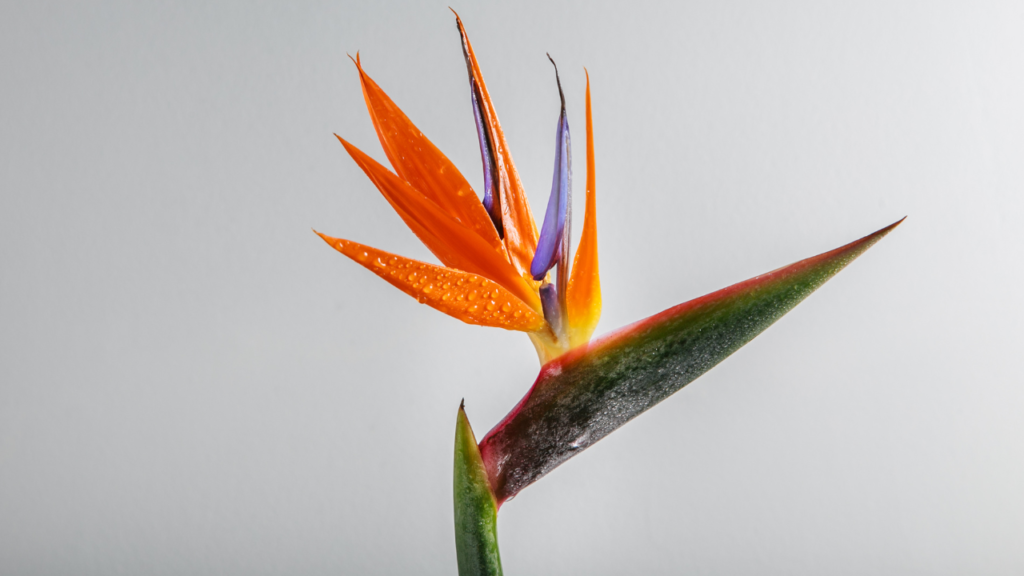
Origin and Different Species of Bird of Paradise
Bird of Paradise, also known as Strelitzia, is a tropical plant native to South Africa. It earned its name due to the unique flower it bears, which closely resembles a bird in flight. There are five main types of Bird of Paradise species, including Strelitzia reginae, Strelitzia nicolai, Strelitzia alba, Strelitzia caudata, and Strelitzia juncea. Each species has distinctive features and variations in size, but all bear the showy, distinct flowers that represent this plant family.
Botanical Characteristics of Bird of Paradise
Bird of Paradise is a robust, evergreen plant that thrives in warm, tropical climates. It can grow from 4 to 6 feet tall, with large, strong leaves that resemble a banana plant. The leaves are a glossy green and arch away from the stem in different directions giving it a fan-shaped appearance. The flowers are the most distinctive part of this plant, with vibrant colors including orange, blue, and white, and resembling the shape of an exotic bird.
The Bird of Paradise plant typically displays its vivid blooms during late winter to early spring, with each blossom having a lifespan of about a week. Once a stalk has finished blooming, new shoots at the base will start to develop, keeping the plant actively blooming for extended periods.
Special Features and Needs
Bird of Paradise is a perennial plant with a long lifespan; under optimal conditions, this plant can live and thrive for decades. It prefers full sun to light shade and is highly tolerant of different types of soil conditions, although it performs best in rich, well-drained soil.
One of the special features of this plant is its aerial root system. Along with regular root system, Bird of Paradise has Stilt roots that emerge from the stem above ground and help support the plant. This makes it an excellent choice for planting in areas prone to damage by strong winds, as it is more resistant to uprooting compared to most other plants.
The plant needs regular watering, especially during the warmer months, but care should be taken not to overwater as this may lead to root rot. To mimic its native tropical environment, maintaining a humid environment is crucial for its survival and growth; hence, regular misting is beneficial, especially during dry winters.
Understanding Bird of Paradise Size and Lifespan
Bird of Paradise is a fast-growing plant that can reach up to 6 feet in height and spread up to 5 feet. The size and growth rate largely depend on the growing conditions and care provided. Outdoor Bird of Paradise plants can grow taller, up to 30 feet, under optimal conditions.
Given appropriate care and suitable growing conditions, a Bird of Paradise can live for over 50 years. It is a tough, resilient plant that can withstand a variety of harsh conditions while maintaining its majestic beauty. However, the plant requires a minimum temperature of 50 degrees Fahrenheit to survive and is not frost-tolerant.
Environmental Requirements
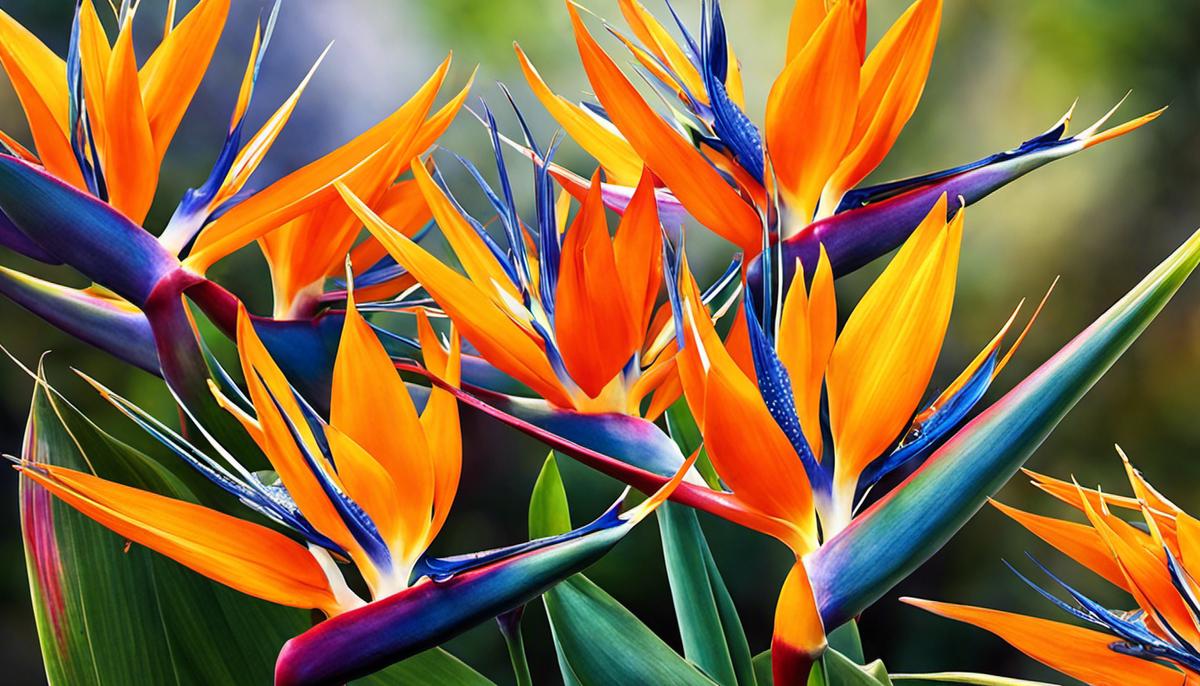
Sunlight Needs for Bird of Paradise
The Bird of Paradise appreciates a warm, sunny environment as it originates from South Africa. A spot near an east, west, or south-facing window is ideal where it can soak up bright, indirect sunlight for at least five hours a day. Be wary of exposing the plant to harsh, direct sun as it can scorch the leaves. During the dreary winter months, consider using a grow light to supplement natural light.
Regulating Temperature for Plant Health
Temperature is an essential consideration for your Bird of Paradise. This tropical plant thrives in temperatures between 65 and 80 degrees Fahrenheit. In winter, try to keep it from places colder than 60 degrees Fahrenheit. If temperatures drop too low, the plant may suffer from curling and browning leaves. Be cautious about sudden temperature fluctuations. Moving the plant to a safer location during colder months may be necessary to maintain plant health.
Maintaining Humidity Levels
Bird of Paradise plants flourish in a humid environment. An environment with a relative humidity of about 60% to 70% would be perfect, but they can tolerate down to 50%. Less than this might lead to brown leaf edges. To increase humidity, you can mist the plant, place a humidifier near it, or set your plant on a tray filled with pebbles and water, keeping the plant above the water level.
Air Circulation Importance
The Bird of Paradise can tolerate average home air circulation; however, it does appreciate access to a bit of fresh air. Avoid placing your Bird of Paradise next to vents, heaters, or drafty windows. If these conditions persist, it could lead the plant to suffer from leaf-edge browning or curling.
Signs of Non-Ideal Conditions
Keep an eye out for warning signs that your Bird of Paradise is not happy. Curling or browning leaf edges may indicate low humidity or too cold temperature. Drooping leaves could be a sign of overwatering, underwatering or lack of enough light. If leaves turn yellow, it may indicate that the plant is receiving too much direct sunlight. Should any of these signs appear, evaluate the plant’s environment and make necessary adjustments swiftly.
Seasonal Adjustments for Bird of Paradise
During cooler months, your Bird of Paradise may go into a less active growth phase. At this time, it is essential to reduce watering and ensure it is receiving enough light. In warmer months, you can increase watering and ensure humidity levels are adequately high. If possible, consider moving your plant outdoors in summer to provide it with more natural light, increased humidity, and ventilation. Always remember to bring it back indoors when temperatures start to drop.
House Plant Essentials
Watering and Feeding Guidelines
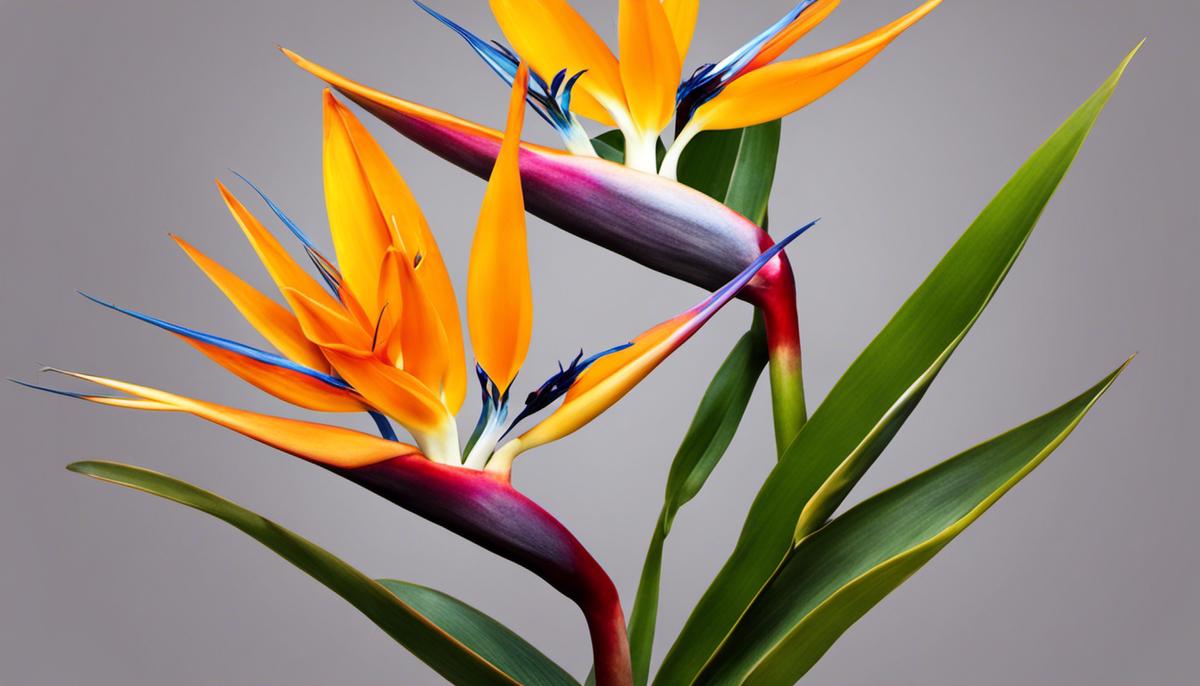
Watering Requirements for the Bird of Paradise Plant
The Bird of Paradise plant (Strelitzia Reginae) thrives when provided with a regular watering schedule. This tropical plant generally prefers a ‘soak and dry’ method of watering. This entails saturating the soil thoroughly and waiting for it to dry out before the next watering session. Typically, watering once a week is sufficient to keep the plant healthy, but it might need more frequent watering during the warmer months and less in the cooler months.
Identifying Signs of Overwatering and Underwatering
To maintain the plant’s health, it’s essential to know the signs of overwatering or underwatering. If you’re overwatering, you might notice yellow leaves and a general drooping or wilting of the plant. Overwatering can also lead to the growth of root rot. On the other hand, underwatering can present as curling leaves and shriveled or wrinkled stems.
Preferred Soil Type for Bird of Paradise
Bird of Paradise plants prefer light, well-draining soil that can provide ample room for their robust roots. A good-quality potting mix ideal for large perennials or indoor trees should work well. Add perlite or sand to the mix to improve drainage if necessary.
Feeding and Fertilizing your Bird of Paradise Plant
Feed the plant with a balanced, slow-release fertilizer once in the early spring and then again in mid-summer. Look for a fertilizer with an N:P:K ratio of 3:1:2 or 1:1:1. The fertilizer should also contain micronutrients, specifically iron, as Bird of Paradise plants crave these elements for optimal growth.
Adapting Care Routines for Leaf and Flower Development
When the Bird of Paradise develops new leaves or flowers, it’s essential to adjust your watering and feeding routines slightly. New growth indicates that the plant is in a phase of active growth, which usually means it requires additional resources. Consider watering more frequently and possibly slightly increasing feeding to support the plant’s growth during this period. However, always monitor the plant’s reaction to these changes to avoid overwatering or overfeeding. Under optimal conditions, these plants typically bloom in late winter or early spring, but it’s not unusual for indoor plants not to bloom at all.
Pruning and Repotting
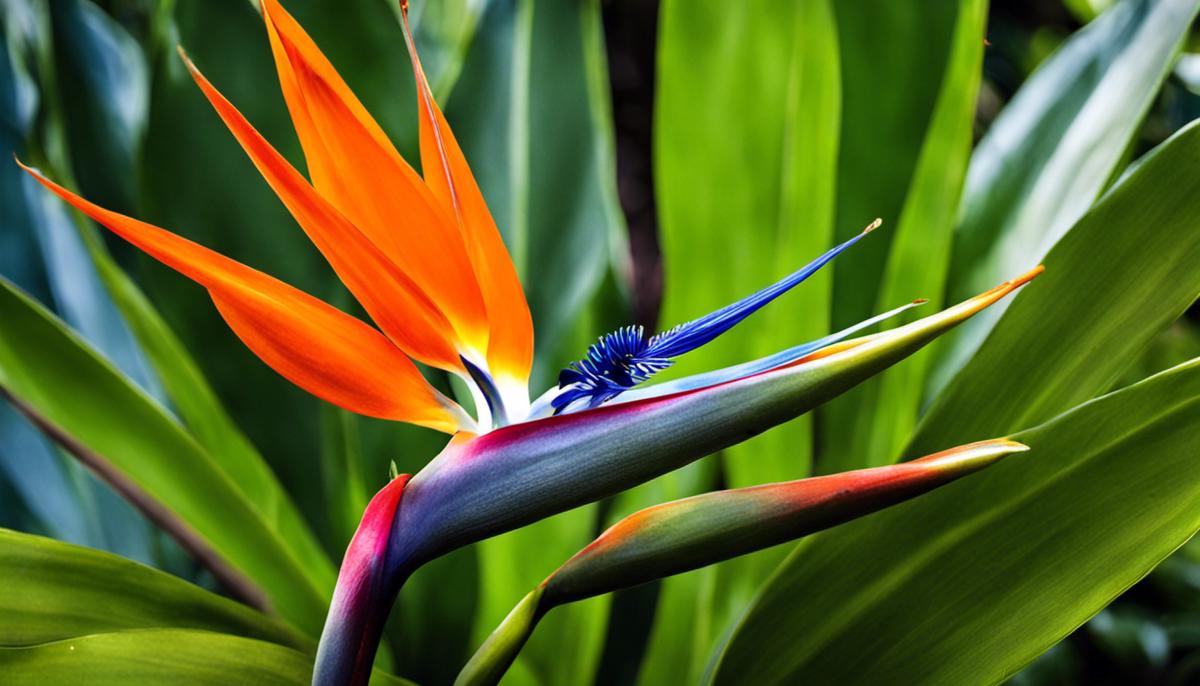
Pruning a Bird of Paradise Plant
Pruning your Bird of Paradise plant is an essential part of its care routine, which promotes healthy growth and helps maintain its beautiful tropical shape. Pick a time during late spring or early summer to prune your plant, as this is the period of growth and the plant can easily recover from any cutting.
Before you begin pruning, ensure you have sharp, clean shears or scissors to reduce any damage to the plant. Identify any dead or dying leaves – these are usually brown, yellow or wilted. Carefully trim these leaves off at the base of the stalk, taking care not to harm any healthy leaves or stems. You should also prune old flower stalks that have finished blooming.
Repotting Your Bird of Paradise
Repotting your Bird of Paradise plant is necessary when it outgrows its current pot, which is typically every 3-5 years. A timely repotting allows room for growth and keeps your plant healthy and vibrant.
To begin repotting, choose a pot that is about 2 inches larger in diameter than your current pot. Ensure that the new pot has adequate drainage to avoid waterlogging. Generally, late spring or early summer is the best time to repot as these seasons coincide with the plant’s growing phase.
Begin by preparing the new pot with a layer of potting soil. Next, carefully remove the Bird of Paradise from its current pot. You might need to gently tap the sides of the pot to loosen the soil. Once the plant is free, inspect the roots. If any appear mushy or rotten, trim them away before moving ahead.
Position your plant into its new pot. Fill the surrounding area with more potting soil, leaving about an inch of space at the top to allow for watering. Firmly press the soil around the plant’s base to secure it. After repotting, thoroughly water your Bird of Paradise until the water drains out the bottom, but avoid over-soaking the soil.
Remember, a properly pruned and repotted Bird of Paradise plant will thrive and display its iconic, tropical foliage for years to come. Keep watching for any signs of distress and adjust your care routine as needed. Proper care will ensure your Bird of Paradise stays happy, healthy, and a centerpiece in your home or garden.
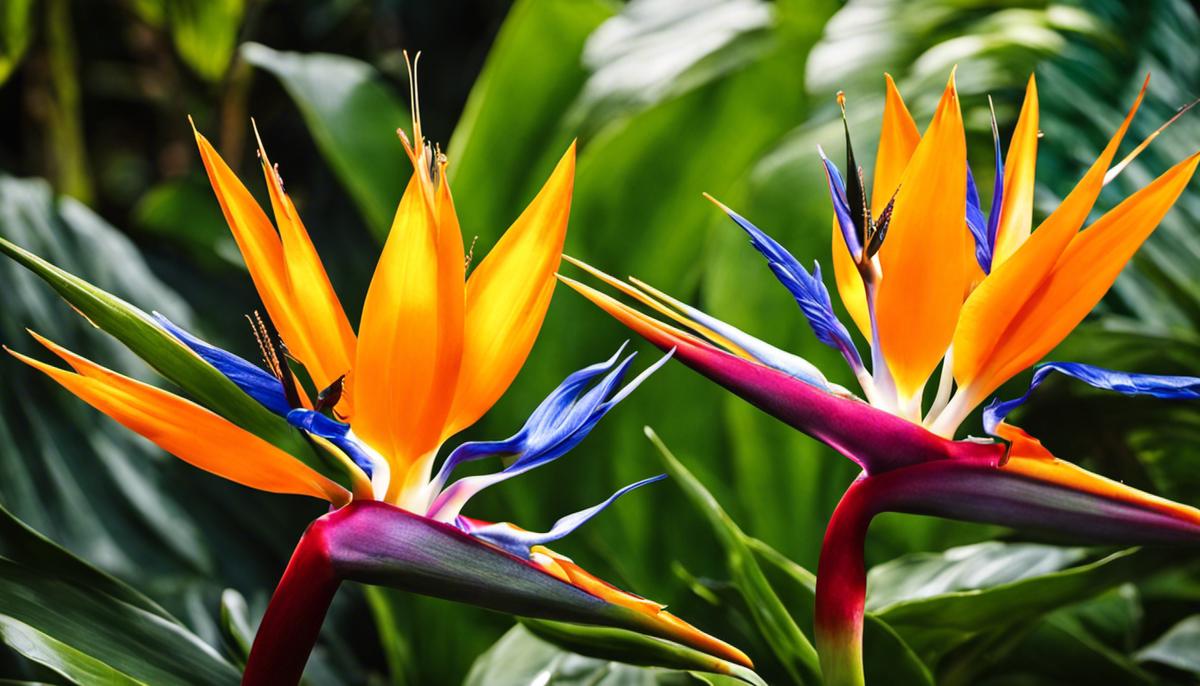
In wrapping up, caring for your Bird of Paradise is a rewarding exercise that requires a holistic blend of knowledge, understanding, dedication, and occasionally puzzle-solving. Yet, it is a journey that holds exciting discoveries at every turn. From getting the watering and feeding regimen right to understanding pruning and repotting techniques, you become an active participant in the evolution of a living masterpiece. By following conscientious care and nurturing guidelines, you can ensure this lush, vibrant tropical delight continues to thrive, adding visual warmth and tropical essence to your space. Regardless of its somewhat demanding care requirements, the extravagant beauty of the Bird of Paradise makes every effort worthwhile and every challenge a pathway to become a more competent plant parent.
